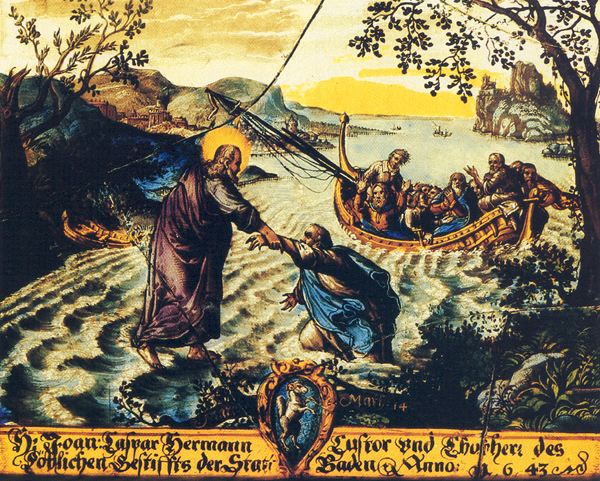Image Details

Sonia Halliday and Laura Lushington
A lifesaver, as well as a saver of souls, Jesus catches hold of Peter, who began to sink when he momentarily doubted Jesus’ power (Matthew 14:22–33). Swiss artist Johann Caspar Herman produced this small stained-glass panel—now in the Darmstadt Museum, Germany—in 1643. Six cracks, glued and blackened with age, mar the panel.
The scene displays the same composition as Tintoretto’s earlier Christ at the Sea of Galilee, published in the April 1994 BR (see “Understanding Jesus’ Miracles,” BR 10:02). In both works, Jesus stands on the left in a covelike area, while the disciples’ boat lies diagonally to the right; one shore, with a tree, fills the lower right corner, and the other shore, at upper left, includes a hill and spit of land at upper center. One point of difference, the fallen mast in the disciples’ boat, may represent the disciples’ lack of direction without Jesus.
Before the Enlightenment, the ascendent rationalism of the 18th century, people generally regarded the Bible as historical truth, though not every detail was interpreted literally. Rationalists during the Enlightenment, however, tried to find natural explanations for such miracles as Jesus walking on water, which they suggested Jesus may have accomplished by walking on submerged rocks.
